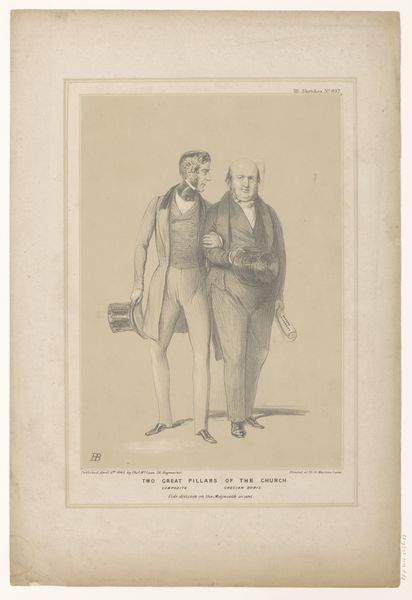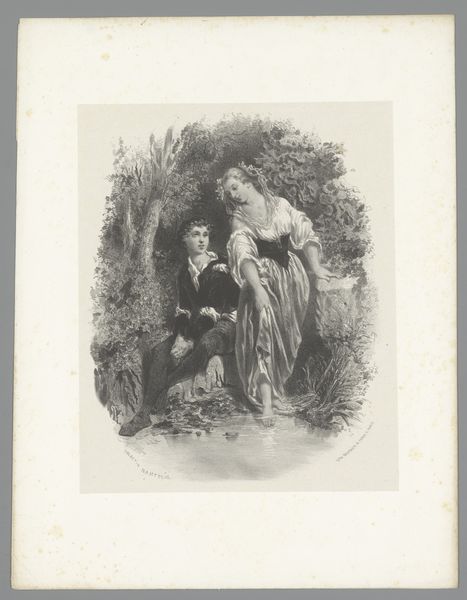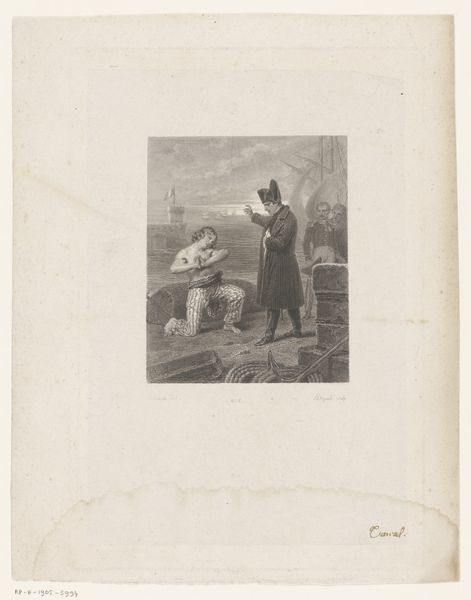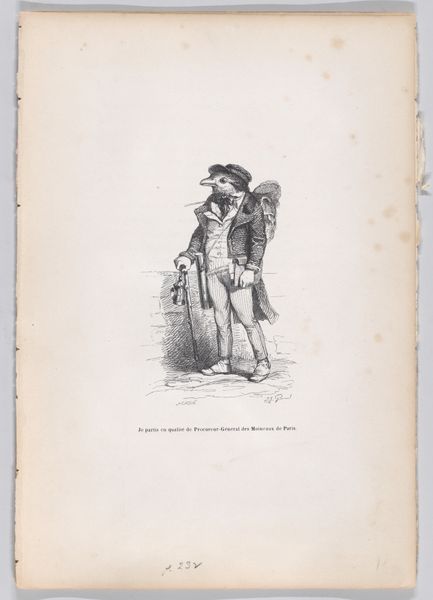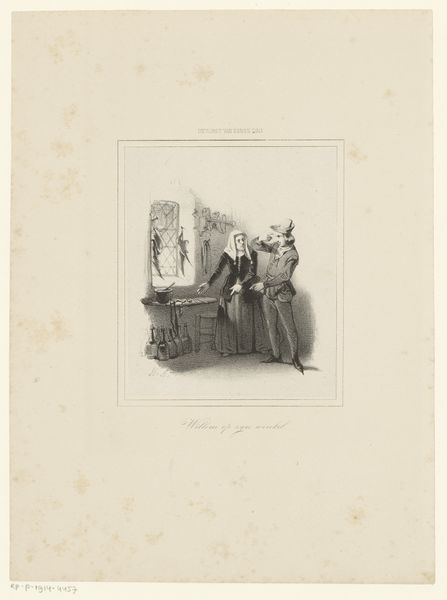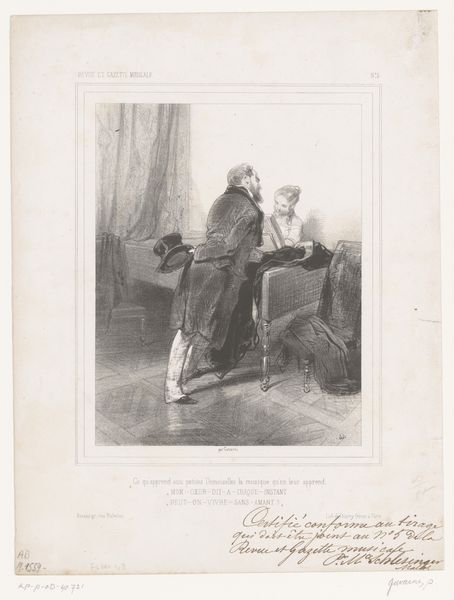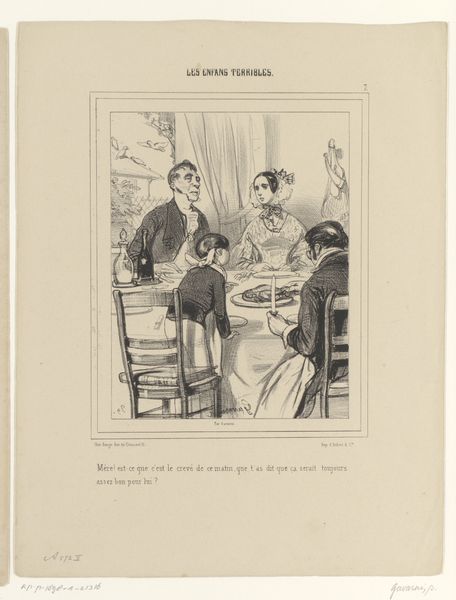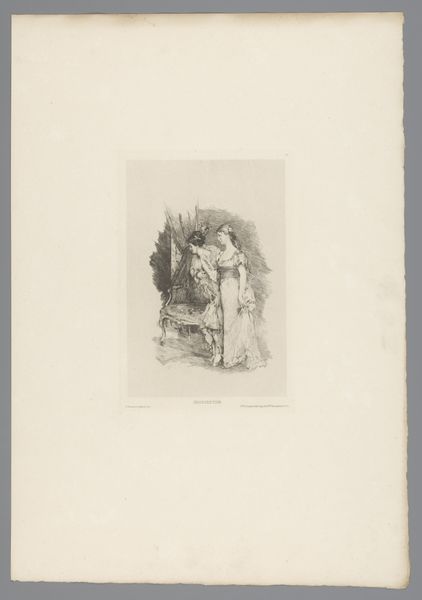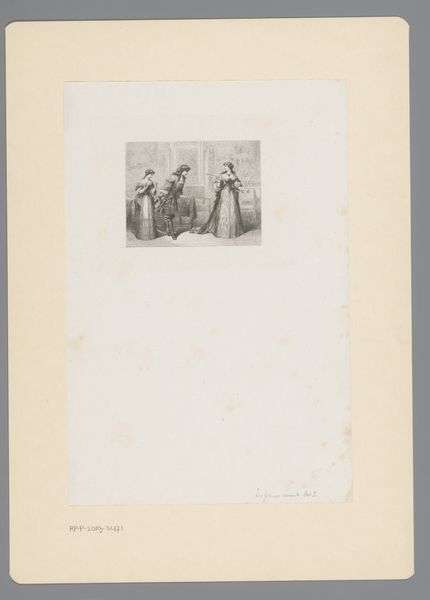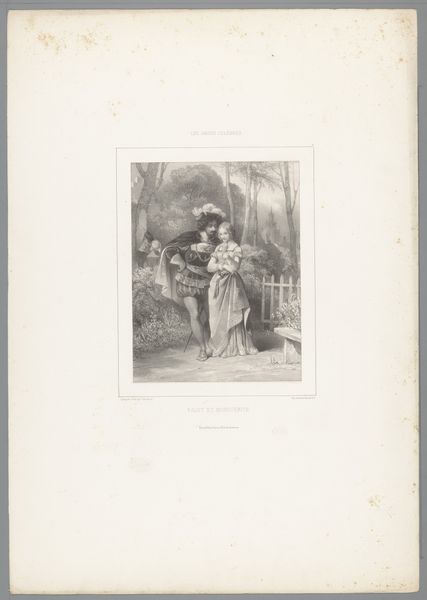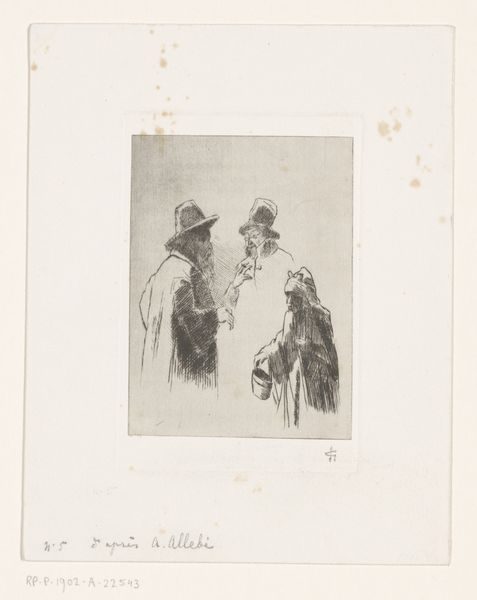
drawing, print, ink, pencil
#
portrait
#
drawing
# print
#
figuration
#
ink
#
romanticism
#
pencil
Dimensions: height 361 mm, width 277 mm
Copyright: Rijks Museum: Open Domain
Curator: This intriguing print is titled "Two Men with an Angel Holding a Palm Frond in the Background," created by Célestin Nanteuil sometime between 1823 and 1873. It's rendered in pencil and ink, a captivating piece from the Romantic period. Editor: My initial impression is somber, even melancholic. The angel feels less celebratory and more like a symbolic watcher. Curator: It is indeed a study in contrasts. Nanteuil was active during a time of significant political upheaval in France. The work captures a sense of unease that pervaded much of nineteenth-century life, even as it engages with themes popular at the time, namely spiritualism and religion. Consider, for example, how death or the deceased become romantic subjects worthy of veneration. Editor: That tension between the earthly and spiritual is definitely present. The two men seem grounded, perhaps weighed down by earthly concerns, while the angel, though ethereal, feels bound to their experience. There's almost a parasitic quality to it. Curator: The very inclusion of the angel can be understood through the framework of Romanticism which elevated feeling and subjective experience over reason and objective analysis. Religious and spiritual imagery also was particularly attractive, given how intertwined organized religion and governmental structures became during the 19th Century. What power does this angel have over these two men, one might wonder? Is the power divinely motivated or humanly ordained? Editor: I wonder, too, about the palm frond the angel holds. Is it meant to represent victory or peace? Or is there a critique of colonialism, given the exotic nature of the frond? The vagueness really invites projecting layers of contemporary experience onto these figures. Curator: Certainly. The angel figure is vague enough to permit an interesting range of contemporary applications, whether social, political, or spiritual. In truth, this is very characteristic of Romanticism more generally. These are figures not particularly embedded into our world, not even a highly convincing fantastical world. This sense of un-anchoring these figures only works to elevate these characters and permit all of us, in turn, to project meanings and assumptions of our own. Editor: It reminds us that even depictions of the past are always mediated through the present. What seems innocent or idealized from one vantage point can reveal uncomfortable truths from another. Curator: Absolutely. Reflecting on how those socio-political shifts influence both production and interpretation, even now, enriches our engagement with Nanteuil's art. Editor: Indeed, situating this piece within those broader narratives—historical and contemporary—unlocks new avenues of meaning.
Comments
No comments
Be the first to comment and join the conversation on the ultimate creative platform.
